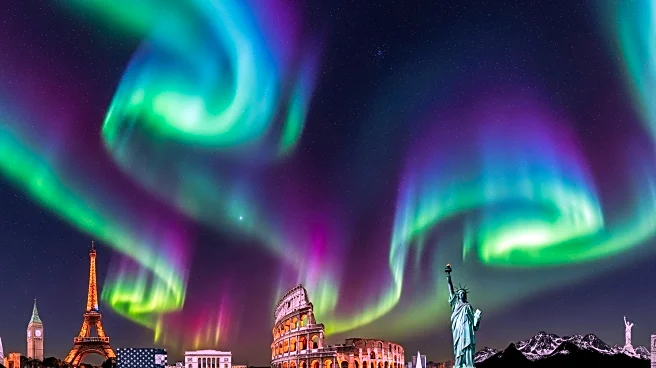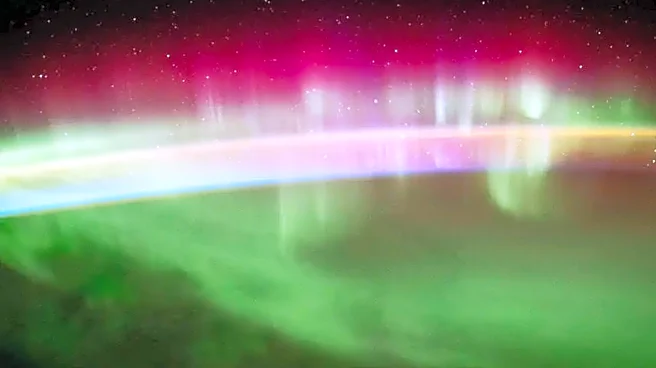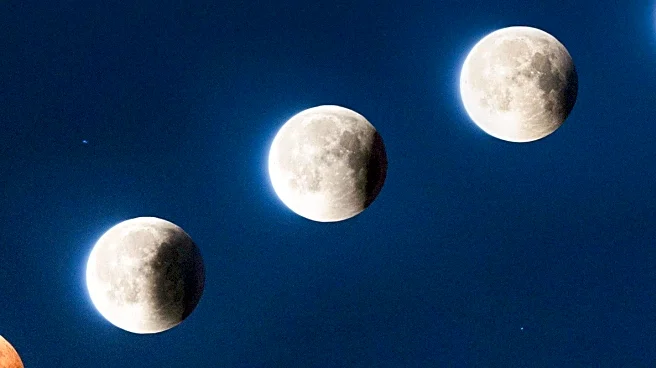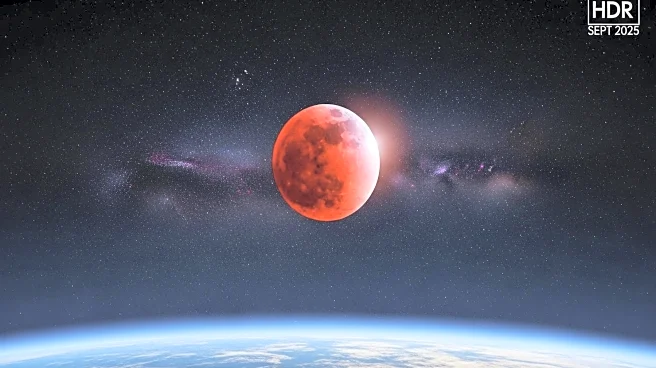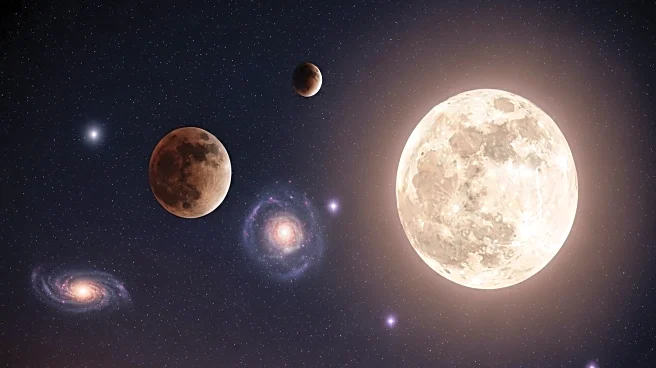What's Happening?
A cannibal solar storm impacted Earth's magnetic field on September 1, 2025, leading to a geomagnetic storm that illuminated skies across Europe and North America. The storm reached G2 (moderate) levels, as reported by the U.K. Met Office and NOAA's Space Weather Prediction Center. This event was characterized by a 'cannibal CME,' where one coronal mass ejection overtakes another, creating a complex disturbance in the solar wind. Despite forecasts suggesting potential G3 or even G4 (severe) activity, the storm remained moderate due to the northward orientation of the interplanetary magnetic field, which limited energy coupling into Earth's magnetosphere. Nonetheless, the storm provided skywatchers in regions such as northern Europe, Canada, and parts of the northern United States with vibrant displays of the aurora borealis, featuring greens and purples.
Why It's Important?
The occurrence of such solar storms is significant as they can affect satellite operations, power grids, and communication systems on Earth. While this particular storm was moderate, stronger events could lead to disruptions in these critical infrastructures. The ability to predict and monitor solar storms is crucial for mitigating potential impacts on technology and daily life. Additionally, the visibility of the northern lights in areas not typically prone to such displays highlights the dynamic nature of space weather and its influence on Earth. This event also underscores the importance of international collaboration in space weather forecasting, as agencies like NOAA and the U.K. Met Office work together to provide accurate predictions.
What's Next?
Future monitoring of solar activity will continue to be essential, as the sun undergoes cycles of increased and decreased activity. Scientists and space weather forecasters will keep an eye on solar phenomena to predict potential impacts on Earth. Continued advancements in technology and forecasting models will aid in better understanding and preparing for such events. Stakeholders, including governments and industries reliant on satellite technology, may need to develop contingency plans to address possible disruptions caused by severe solar storms.
Beyond the Headlines
The cultural fascination with the northern lights, often seen as a natural wonder, can lead to increased interest in space weather phenomena. This event may inspire further public engagement with astronomy and science, as people seek to understand the forces behind such spectacular displays. Additionally, the study of solar storms contributes to broader scientific knowledge about the sun's behavior and its interactions with Earth's magnetic field, which can have long-term implications for space exploration and technology development.
